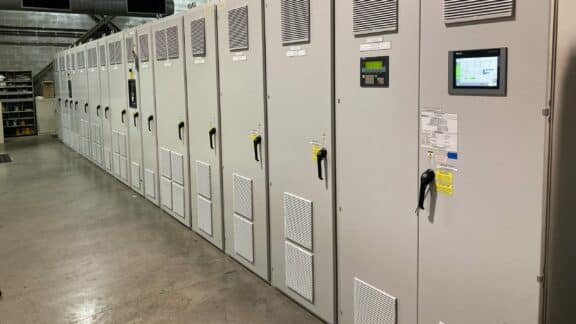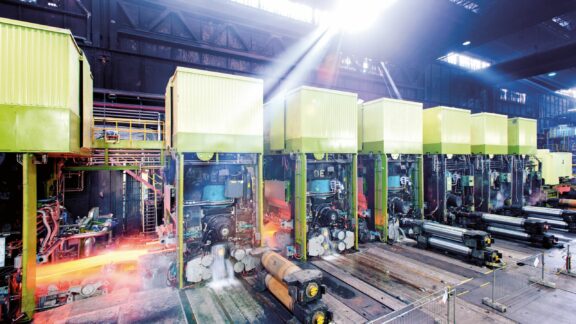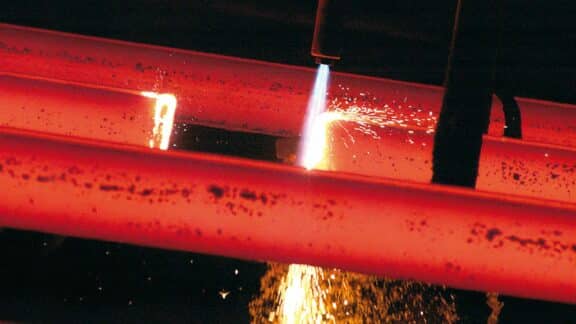Stopping a continuous rolling mill will result in strip defects as well as production losses. Strip-surface marks and thickness deviations may exceed quality control limits and the strip section may have to be cut out.
Depending on strip-surface quality targets (e.g., when producing in high-end stainless-steel mills), roll changes may be called for after two or three strips. In today’s plants, this means the line has to be stopped and restarted.
- Higher production stability
- Higher output due to longer production time
- Higher output due to shorter off-gauge length
- Hot (active) spare parts in case of failure
With the patented Flying Roll Change (FRC) from Primetals Technologies, work rolls can be changed on the fly without stopping the mill. The technology works as follows: one stand, e.g., a hypothetical inactive stand No. 4, is prepared with new rolls during the line run with the roll gap being open at that time. At the stand with the worn rolls, e.g., an active stand No. 3, the roll gap will be set to open when the weld seam passes so that rolls can be changed. As long as stand No. 3 is not operating, the thickness reduction it usually performs will be automatically taken over by the stand that is already equipped with new rolls—stand No. 4 in our example. Production can therefore continue without interruption. Introducing the FRC to a rolling mill can increase its production by of up to 8% per year depending on production speed, frequency of roll changes, and type of material. As an example: at a production capacity of 1 million tons per year and $60 of added value for stainless steel, this could mean an additional $4.8 million in profit per year.
If a mill works with materials that require all stands to be permanently active for maximum strip thickness reduction, the solution may be to add an additional stand to the setup. The investment typically pays for itself within one or two years of production.


